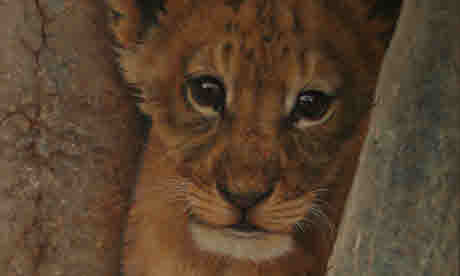
The best African safari destinations for wildlife artists
Artist Pip McGarry reveals his favourite spots for capturing Africa's wildlife on canvas
Maasai Mara, Kenya
For a wildlife artist, this must be the top destination for big cats. It is one of the few places you can almost guarantee to see lion, leopard and cheetah in abundance, and notably all year-round. An additional bonus is the lighting: at sunrise and at sunset there is often a warm, golden light which enhances the colours of the big cats particularly.
With a year-round water source in the Mara and Talek rivers, the area teems with huge herds of zebra, buffalo, topi and Thompson’s gazelle, as well as elephant, warthog, ostrich, hyena, bat-eared foxes, caracal, serval, giraffe and even black rhino.
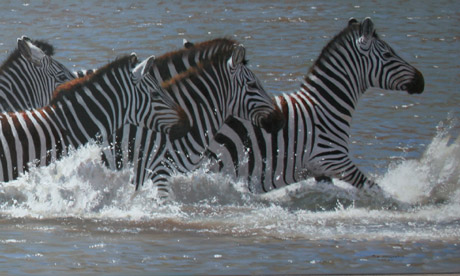
Ngorongoro Crater, northern Tanzania
Arguably one of the most awesome sights in Africa, this vast volcanic caldera is 11 miles across by 8 miles with walls 600 metres high. The walls of the surrounding crater provide a beautiful blue backdrop in the distance, which can often enhance a painting more than foliage or bush.
On the crater floor artists will find some of the largest bull elephants in Africa, but also the endangered black rhino can be seen along with many other animals, such as zebra, wildebeest, lions, hyenas and hippo.
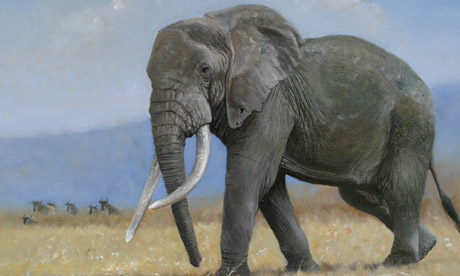
Moremi Game Reserve, Botswana
The Okavango Delta flows into this diverse habitat, which is largely comprised of riverine woodland. Further into the reserve the water from the Delta forms the Khwai river, which flows through and along the border of the Park, along the famed Sable Alley.
This is a great place for artists to capture elephants crossing or bathing in water, but also antelopes such as Waterbuck and Red Lechwe. The buffalo herds here are particularly impressive, with plenty of big old males, their rich dark colours contrasting the colour of the grasses – as opposed to buffalo in the Chobe river area where there are many smaller females and calves.
The best time to visit for that burnt, dusty background is September and October at the end of the dry season. For wildlife artists specialising in birds, the variety is astonishing, with many owls, beautiful Saddleback storks, rare Wattled cranes, egrets, plovers, kingfishers, vultures, woodpeckers, jacanas, fish eagles and many more in abundance.
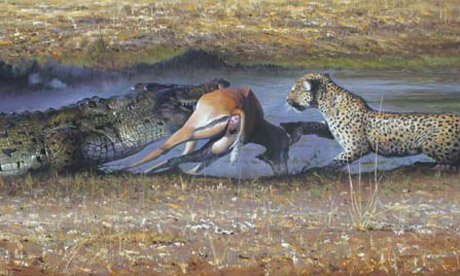
Chobe National Park, Botswana
For a wildlife artist, the Chobe river area in the north is one of the best places to capture images of elephant herds and bathing or playing in water – always a good subject for paintings. Due to the year round presence of water, there is a large resident population of many big game animals, such as buffalo, kudu, jackal and impala – an opportunity to capture shimmering reflections as they drink and bathe.
It's also a great place to see the rare Sable and Roan antelope. Smaller antelopes can be seen along the river, such as Bushbuck and Sitatunga, occasionally the shy Puku, plus Steenbok and Kudu. Once again a wonderful opportunity for bird artists, with innumerable species (particularly along the Chobe river), with kingfishers, herons, darters, cranes, pelicans, the stunning Carmine Bee Eater and many other aquatic birds. The lure of the river provides an opportunity for artists and photographers to capture crocodiles, Monitor lizards, hippos, buffalo and elephants too.
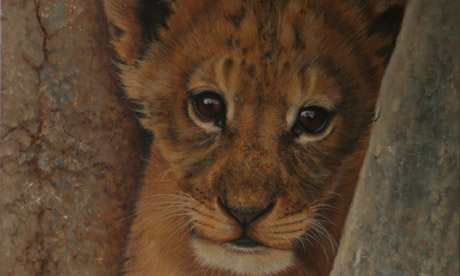
Selous National Park, southern Tanzania
Here, artists are presented with an unusual backdrop of tall Borassus palms punctuating the scenery. The wildlife here in general seems far more wary than in the more popular parks of the north, but don't be put off. There is a very wild and unspoilt feeling to the area and the scenery is stunning.
This is also one of the best places for artists to witness the rare wild dog. I recommend taking a local flight in and back as the journey by vehicle from Dar is long and tiring, though interesting. The adjacent Mikumi National Park and nearby Ruaha are worth a visit too; conditions are best for artists during the dry season from June to October.
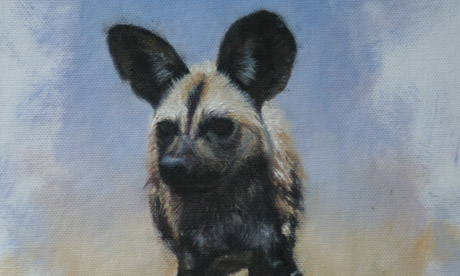 Pip McGarry has an international reputation for his oil paintings of big cats and game. He has organised and led more than 20 safaris for wildlife artists and photographers to the remote game reserves of northern Botswana, Tanzania and Kenya.He is also the founder and Chairman of Marwell International Wildlife Art Society (MIWAS), the largest wildlife art society in Europe, and has been the official 'Artist-in-Residence' at Marwell Wildlife Park in Hampshire since 1999. Pip's next solo exhibition will be at The Frame Gallery in Odiham, Hampshire from 28th June until 12th July 2014.
Pip McGarry has an international reputation for his oil paintings of big cats and game. He has organised and led more than 20 safaris for wildlife artists and photographers to the remote game reserves of northern Botswana, Tanzania and Kenya.He is also the founder and Chairman of Marwell International Wildlife Art Society (MIWAS), the largest wildlife art society in Europe, and has been the official 'Artist-in-Residence' at Marwell Wildlife Park in Hampshire since 1999. Pip's next solo exhibition will be at The Frame Gallery in Odiham, Hampshire from 28th June until 12th July 2014.





